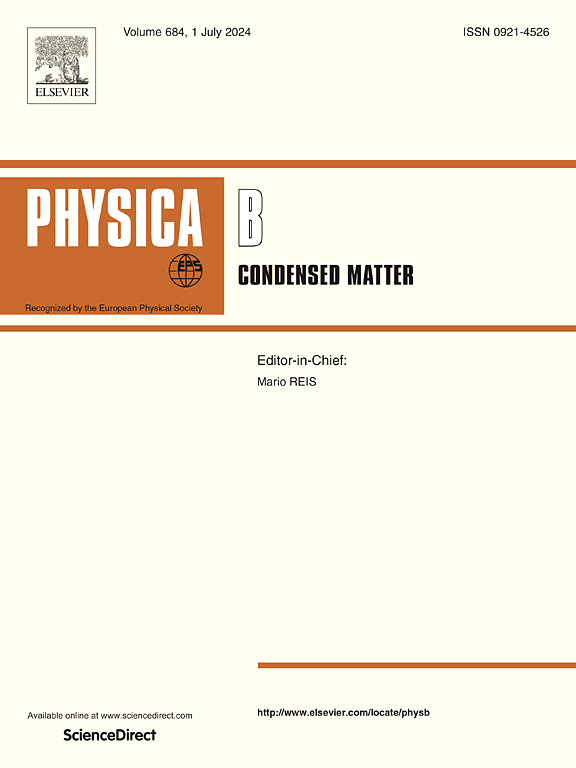Structural parameters of CVD synthesized Ga2O3 nanostructures from X-ray diffraction analysis derived by Scherrer, Williamson-Hall, Size-Strain Plot and Halder-Wagner methods–A comparative study
IF 2.8
3区 物理与天体物理
Q2 PHYSICS, CONDENSED MATTER
引用次数: 0
Abstract
Gallium oxide () nanostructures (NSs) have been synthesized by hydrogen-reducing chemical vapor deposition method at various substrate angles. X-ray diffraction (XRD) study confirms the polycrystalline nature of the NSs with monoclinic structure. Here, a series of X-ray peak profile analysis models such as Scherrer method, Monshi-Scherrer (M − S) plot, Williamson-Hall (W-H) plot, Size-Strain plot (S-S-P) and Halder-Wagner (H-W) technique have been utilized to estimate the crystallite size and lattice strain. All the models are evaluated with their merits and demerits in detail, and the structural parameters determined from different models are compared. Among the X-ray peak profile analysis methods, S-S-P method is the most suitable since the data points more accurately fit in this method with the highest average goodness of fit, value. It has also been suggested that the anisotropic strain could have increased and shifted to lower angles crystallographic reflections as the substrate angle was 67.5 .
求助全文
约1分钟内获得全文
求助全文
来源期刊

Physica B-condensed Matter
物理-物理:凝聚态物理
CiteScore
4.90
自引率
7.10%
发文量
703
审稿时长
44 days
期刊介绍:
Physica B: Condensed Matter comprises all condensed matter and material physics that involve theoretical, computational and experimental work.
Papers should contain further developments and a proper discussion on the physics of experimental or theoretical results in one of the following areas:
-Magnetism
-Materials physics
-Nanostructures and nanomaterials
-Optics and optical materials
-Quantum materials
-Semiconductors
-Strongly correlated systems
-Superconductivity
-Surfaces and interfaces
 求助内容:
求助内容: 应助结果提醒方式:
应助结果提醒方式:


